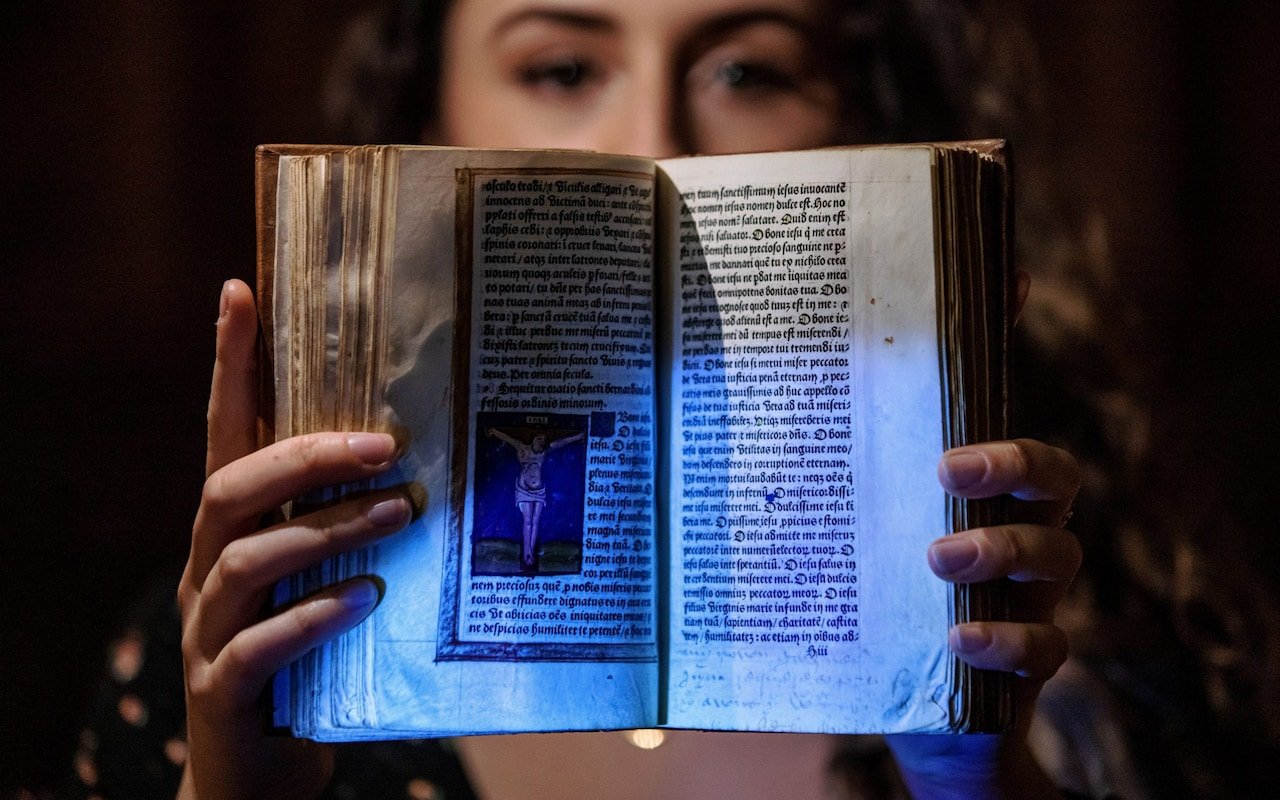
When Anne Boleyn, King Henry VIII’s second wife, was executed in 1536, she is said to have carried a prayer book, which she handed to a lady-in-waiting just before her death. Now, a historian has discovered secret messages hidden in the tome, revealing that the book was passed down among women who risked discovery by the king for owning something associated with a condemned traitor.
Kate McCaffrey, a former visitor experience assistant at Hever Castle and Gardens, Boleyn’s childhood home in Edenbridge, U.K., used ultraviolet light and photo editing software to examine the book’s pages.
It was part of a set made for Henry’s first wife, Catherine of Aragon, in the 1520s. It would have been given to Boleyn in the 1520s, when she served as the queen’s lady-in-waiting. Though Henry famously broke with the Catholic church to divorce Catherine and marry Boleyn, he accused his second wife of treason and and incest, beheading her after only three years of marriage.
Previously, scholars knew of only one inscription in the book, in Boleyn’s hand, reading “Remember me when you do pray/That hope doth lead from day to day.” But McCaffrey was interested in what looked like smudges on one of the pages.
What she found was four family names: Gage, West, Shirley, and Guildford. The signatories were relatives of Elizabeth Hill, a childhood friend of Boleyn’s who was part of her household at court.
“The legend is [Anne Boleyn] took the book to the gallows, although it is not proven historically,” McCaffrey told the London Times. “It could be that Anne passed this book on before her execution, or she bequeathed it, but certainly I think it was through this woman Elizabeth Hill.”
Three of the four signatures were from women: Hill’s mother, aunt, and female cousin, as well as her uncle.
“It is clear that this book was passed between a network of trusted connections, from daughter to mother, from sister to niece. If the book had fallen into other hands, questions almost certainly would have been raised over the remaining presence of Anne’s signature,” McCaffrey said in a statement. “Instead, the book was passed carefully between a group of primarily women who were both entrusted to guard Anne’s note and encouraged to add their own.”
The hidden words and names in Anne Boleyn’s Book of Hours prayer book revealed by ultra-violet light. Photo courtesy of Hever Castle & Garden.
“In a world with very limited opportunities for women to engage with religion and literature, the simple act of marking this Hours and keeping the secret of its most famous user, was one small way to generate a sense of community and expression,” she added.
The book may have even found its way into the hands of Boleyn’s daughter, Queen Elizabeth I, thanks to Hill’s daughter, Mary.
“Mary Hill was a very close friend of Elizabeth I, so a poignant and likely possibility is that Mary was able to show Elizabeth her mother’s signed inscription in the book,” McCaffrey told the Telegraph. “What makes the book so dangerous to preserve, its association with Anne, actually becomes the main reason for preserving it when Elizabeth I comes to the throne (in 1558) and wants her mother to be remembered.”
McCaffrey released her findings, which are part of her master’s thesis in Medieval and Early Modern Studies at Kent University, on Wednesday, the anniversary of Bolyen’s death.
The book is on view at Hever Castle, which reopened to visitors this week. The institution owns two of three surviving books bearing Boleyn’s signature. The third is at the British Library.
See more photos of the discovery below.
Anne Boleyn’s Book of Hours prayer book. Photo courtesy of Hever Castle & Garden.
An illumination from Anne Boleyn’s Book of Hours prayer book. Photo courtesy of Hever Castle & Garden.
The hidden words and names in Anne Boleyn’s Book of Hours prayer book revealed by ultra-violet light. Photo courtesy of Hever Castle & Garden.
Kate McCaffrey with Anne Boleyn’s Book of Hours prayer book. Photo courtesy of Hever Castle & Garden.